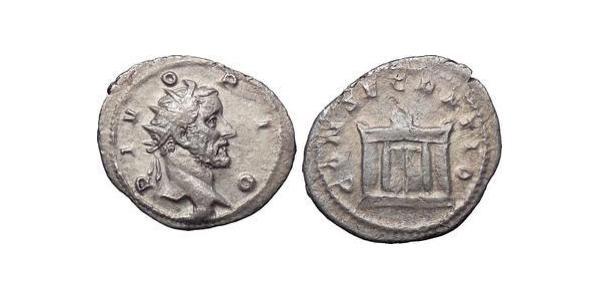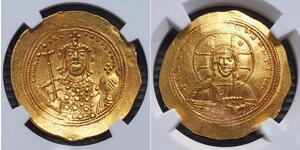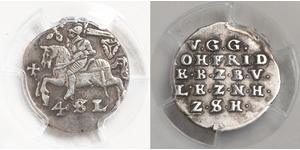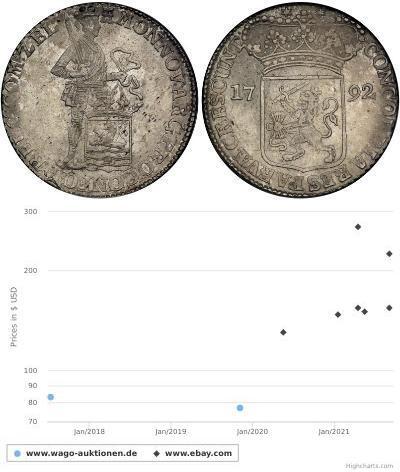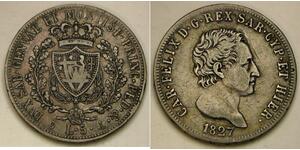[ 3506] ANTONINUS PIUS - RESTITUTION issue struck by TRAJAN DECIUS Silver Antoninianus (25mm, 3.54gm.), Rome, 250-251 A.D. Reference: RIC IV PIII p131, 90 (Trajan Decius); Cohen 1189 (Antoninus Pius). DIVO PIO; radiate head right. CONSECRATIO; lighted altar. Provided with certificate of authenticity. CERTIFIED AUTHENTIC by Sergey Nechayev, PhD - Numismatic Expert The Augustan History (Lat. Historia Augusta) is a late Roman collection of biographies, in Latin, of the Roman Emperors, their junior colleagues and usurpers of the period 117 to 284. It presents itself as a compilation of works by six different authors (collectively known as the Scriptores Historiae Augustae), written in the reigns of Diocletian and Constantine I, but the true authorship of the work, its actual date, and its purpose, have long been matters for controversy.[citation needed] Major problems include the nature of the sources it used, and how much of the content is pure fiction. Despite these conundrums - all of which are of considerable interest - it is the only continuous account for much of its period and is thus continually being re-evaluated, since modern historians are unwilling to abandon it as a unique source of possible information, despite its obvious untrustworthiness on many levels. Title and scope The name originated with Isaac Casaubon, who produced a critical edition in 1603, working from a complex manuscript tradition with a number of variant versions.How widely the work was circulated in late antiquity is unknown, but lengthy citations from it are found in authors of the sixth and ninth centuries AD, and the chief manuscripts also date from the ninth or tenth centuries. (The editio princeps was published at Milan in 1475). The six Scriptores – "Aelius Spartianus", "Iulius Capitolinus", "Vulcacius Gallicanus", "Aelius Lampridius", "Trebellius Pollio", and "Flavius Vopiscus (of Syracuse)" – dedicate their biographies to Diocletian, Constantine and various private persons, and so ostensibly were all writing c. the late third and early fourth century. The biographies cover the emperors from Hadrian to Carinus and Numerian. A section covering the reigns of Philip the Arab, Decius, Trebonianus Gallus, Aemilian and all but the end of the reign of Valerian is missing in all the manuscripts,[citation needed] and it has been argued that biographies of Nerva and Trajan have also been lost at the beginning of the work, which may suggest the compilation might have been a direct continuation of Suetonius. (It has also been theorized that the mid-3rd century lacuna might actually be a deliberate literary device of the author or authors, saving the labour of covering Emperors for whom little source material may have been available.)[citation needed] Despite devoting whole books to ephemeral or in some cases non-existent usurpers,[citation needed] there are no independent biographies of the Emperors Quintillus and Florian, whose reigns are merely briefly noted towards the end of the biographies of their respective predecessors, Claudius Gothicus and Tacitus. For nearly 300 years after Casaubon's edition, though much of the Augustan History was treated with some scepticism, it was used by historians as an authentic source – in the first volume of Edward Gibbon's Decline and Fall of the Roman Empire, for example. In modern times most scholars read the work as a piece of "deliberate mystification" written much later than its purported date, however the "fundamentalist view" still has distinguished support. The dating problem In 1889, Hermann Dessau, who had become increasingly concerned by the huge amount of anachronistic terms, Vulgar Latin vocabulary, and especially the host of obviously bogus proper names in the work, proposed that the six authors were all fictitious personae, and that the work was in fact composed by a single author in the late fourth cen ...
читати далі

|
Добавив:
anonymous 2015-08-19 |
Similar Coin Groups
2025-05-25
- Історичні ціни на монету
2025-05-23
- Нова монета додана до 5 Ліра Italian city-states Срібло Charles Felix of Sardinia
5 Ліра Italian city-states Срібло Charles Felix of Sardinia
в групі 18 монет / 16 цін
⇑
SARDINIA (Italian State) 5 Lire 1827 P - Silver 0.9 - Carlo Felice - VF - 4601 *
Можливо, Вас зацікавить...

